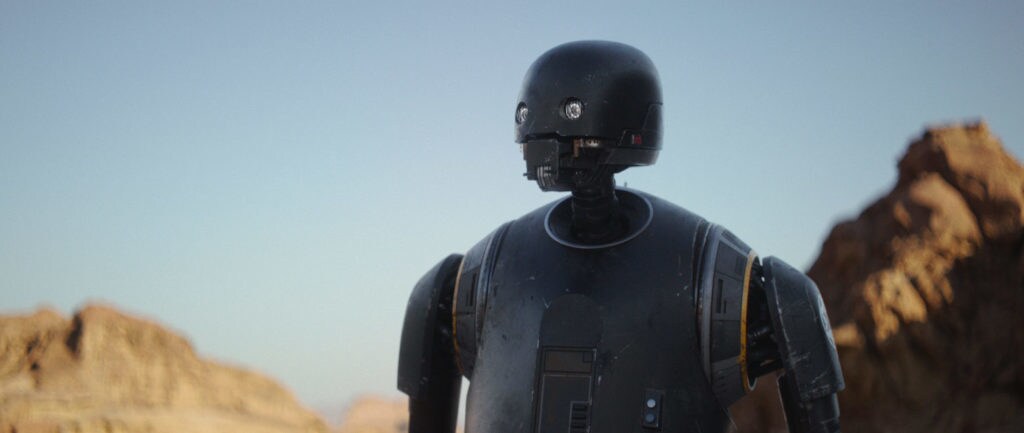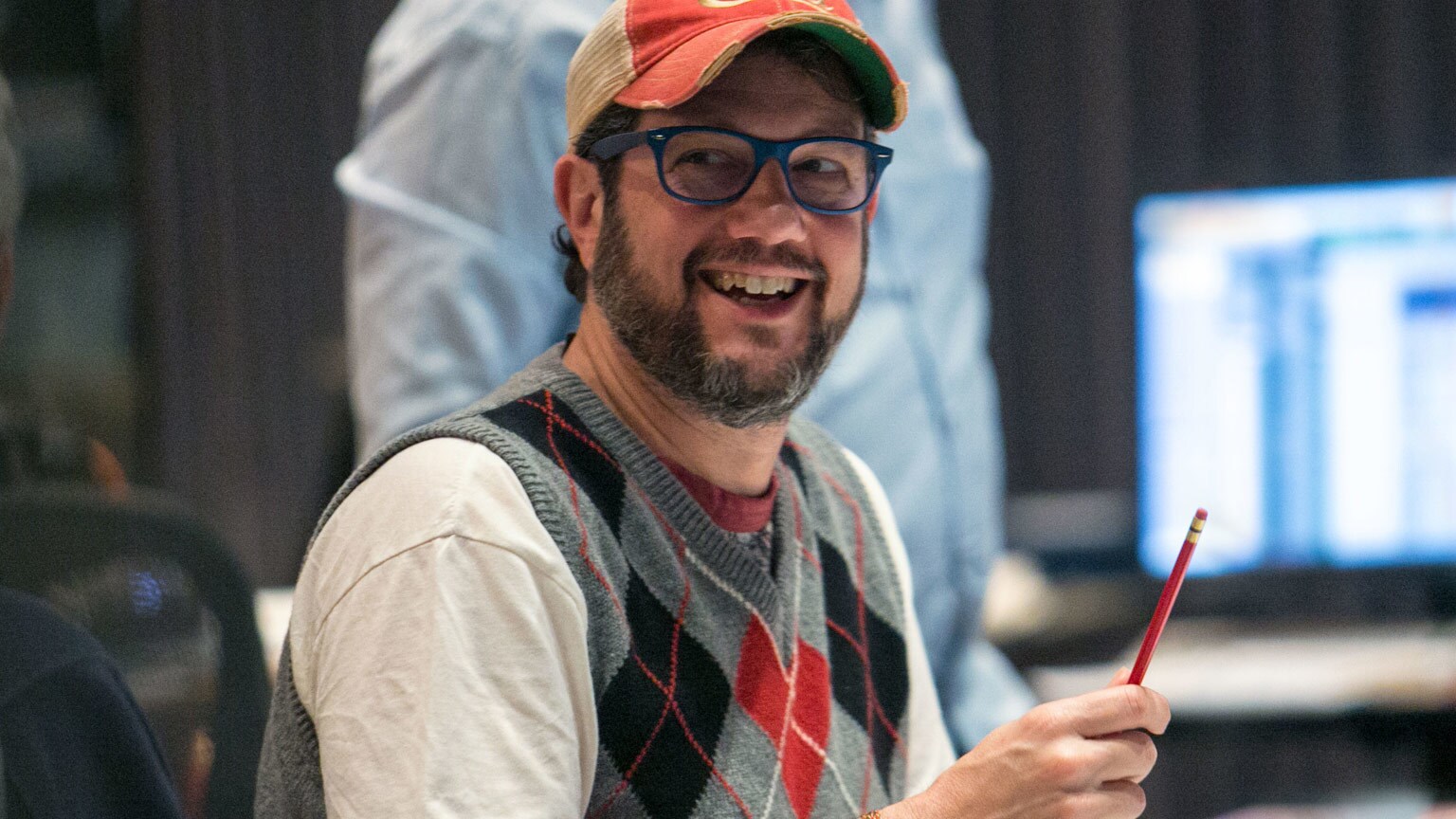The producers behind Rogue One: A Star Wars Story gathered to break down the practical and special effects that went into creating the recent standalone film during a panel at Star Wars Celebration Orlando. The team -- executive producer John Knoll, co-producer John Swartz, production designer Doug Chiang, and Matthew Wood, supervising sound editor for the film, hustled through nearly 45-minutes of stripped down scenes, touched on the importance of richly layered audio, and even had time for a few gags. Here are five highlights from the panel Friday afternoon.

1. Even digital effects can break down -- in terrifying ways. To resurrect the A New Hope-era Tarkin, the team behind Rogue One painstakingly combed through footage to capture the late Peter Cushing's mannerisms, proportions, and facial reactions in the most authentic way possible using CGI, as well as actor Guy Henry for motion capture. Knoll flipped through individual layers, discussing Henry's performance, a CG rendering of his face, and the additional pieces that melded to create the final overlay. And yet, “when you're doing anything technically complicated, things always go wrong,” Knoll said, “sometimes in super-horrifying ways.” Driving the point home was a brief montage of discarded Tarkin shots, including one with zombie-like qualities and an apparently missing jaw, another with the sunken cheeks of someone with no teeth, and a final version where the head appeared to detach from the neck and retreat into his uniform like a turtle pulling into a shell.
2. Even with all the digital technology, the crew still takes a page from the original masters of ILM. The crew behind Rogue One mixed practical effects, digital displays, and the modern-day equivalent of gluing old model bits together to create unique space ships, Knoll said. A massive LED screen served to help the crew generate lighting effects that would later correspond with digital backdrops, and gave the actors something to play off of as they made the jump the hyperspace or came under attack in a brutal space battle. In a flashback scene inside the old Erso apartment on Coruscant, the world outside the window was actually a reworked matte painting from Episode III, Knoll said.

3. Future motion capture-suits should be made with fire-retardant materials. Just ask Alan Tudyk. Tudyk performed on set in a special motion-capture suit, sometimes on stilts or wearing a backpack with a faux droid head to add the appropriate height on uneven terrain. While trying to perfect cutting-edge technology, Knoll said he turned to the actor that made the sarcastic K-2SO come alive for tips on the future of motion-capture suits. His advice? A fire-proof suit. It seems scenes involving pyrotechnics had sent sparks showering onto the naturally sardonic Tudyk a few times, burning through spots on his upper back and on his arms. “The sparks would hit the suit and would actually burn through,” Knoll said. “So, yeah, future suits will be fireproof.” Tudyk, by the way, ad-libbed some of the droid's most quotable lines and memorable moments, Knoll said, including the slap he delivered to Cassian Andor and the fresh one he had ready if the captain mouthed off again.
4. But there's still time to have fun. Among the gags and outtakes Knoll and the team shared was a rough mock-up of K-2SO playing with action figures using audio from another galaxy -- the world of Firefly, which was received with laughs and applause. Borrowing an audio clip from the franchise film Serenity, where Tudyk was also a member of the cast, the reel showed K-2SO but with the soundtrack of Wash playing with his dinosaur action figures. Other gags included Jyn playing Pong and a different ending where Jyn and Cassian were shown as charred skeletons. The callback to A New Hope came out of the crew joking around about how they were going to show the pair's fate, Knoll said.
5. Sound matters. Wood interjected a few anecdotes as the panel came to a close, showing the importance of multifaceted audio tracks with a stripped down version of Darth Vader's pursuit of the Death Star plans. During filming, microphones are trained on the actors, “because that's the most crucial thing to get,” Wood said. Later, background crowd noise, blaster fire, and the soundtrack are all added in to augment the cinematic effect. Without everything working in unison, the tension of the scene is undermined by Vader's heavy footfalls and the near-complete silence surrounding the rebels desperately trying to get the disk to Alderaan.
Kristin Baver is a writer and all-around sci-fi nerd who always has just one more question in an inexhaustible list of curiosities. Sometimes she blurts out “It’s a trap!” even when it’s not. Follow her on Twitter @KristinBaver.














